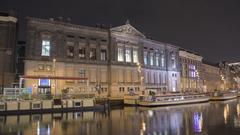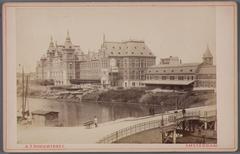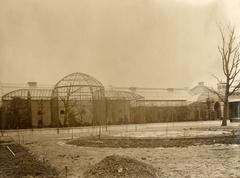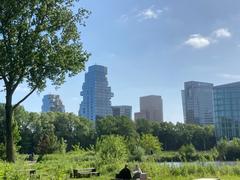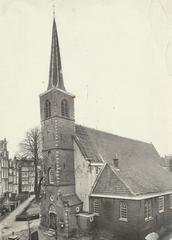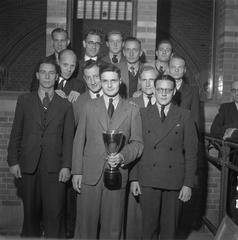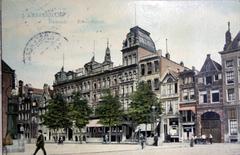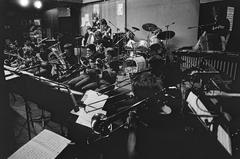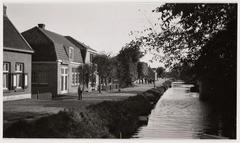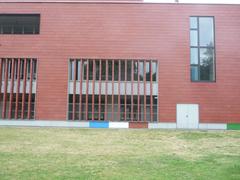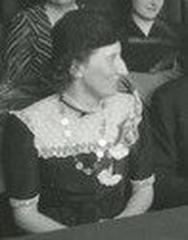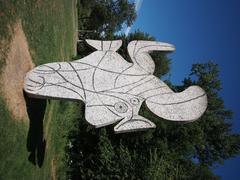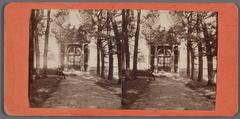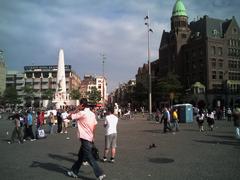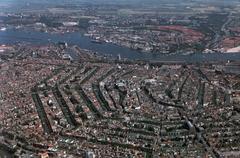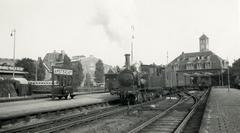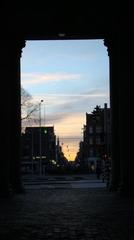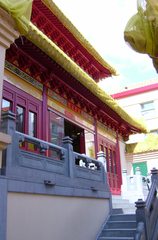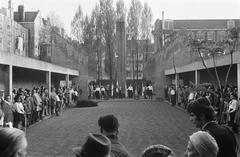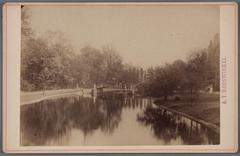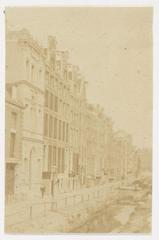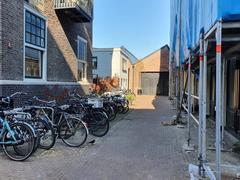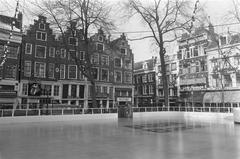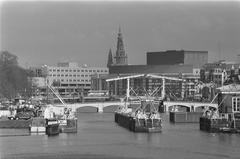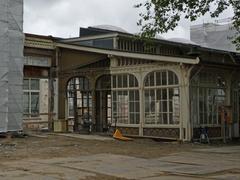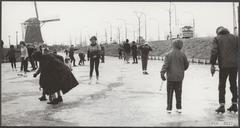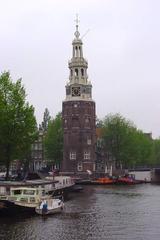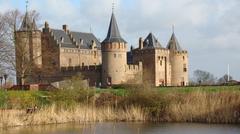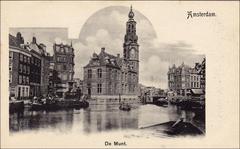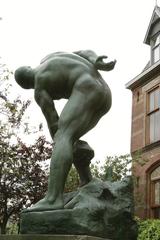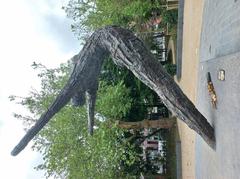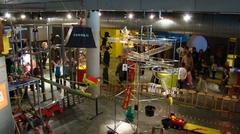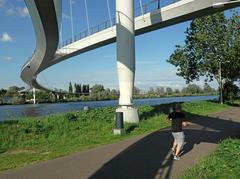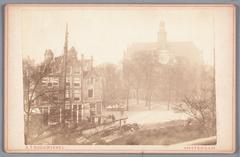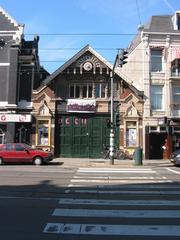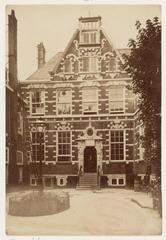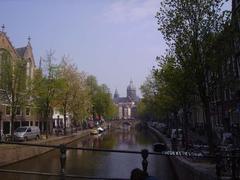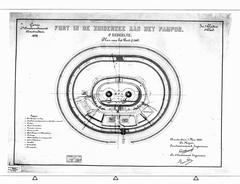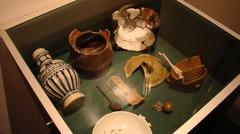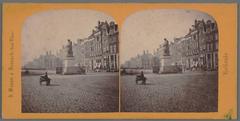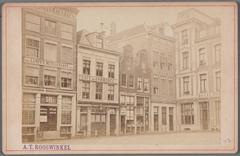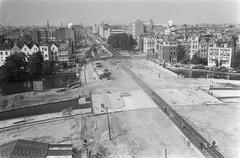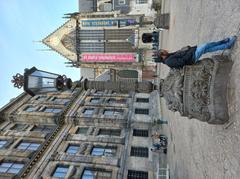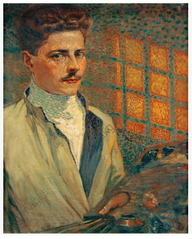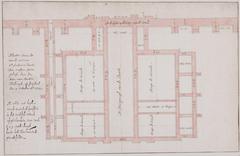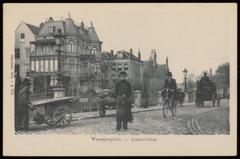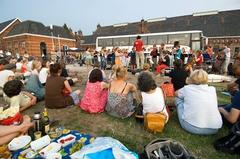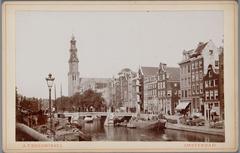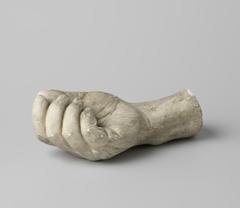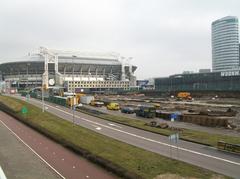
Rasphuis Amsterdam: Visiting Hours, Tickets, and Complete Tourist Guide
Date: 04/07/2025
Introduction
Nestled in the heart of Amsterdam, the Rasphuis stands as a remarkable emblem of the city’s pioneering role in penal reform and social order during the Dutch Golden Age. Established in 1596, this early house of correction was not simply a place of confinement but an innovative institution focused on the rehabilitation of young male offenders through structured labor and moral instruction. Today, while the original prison buildings have disappeared, the Rasphuis site—commemorated by its iconic gate and historical markers—serves as an essential stop for those interested in Amsterdam’s layered past. This comprehensive guide brings together the Rasphuis’s history, visiting information, cultural significance, and practical tips to help you plan an enriching visit (Lonely Planet; isgeschiedenis.nl).
Table of Contents
- History & Significance
- Architectural and Urban Context
- Daily Life Inside the Rasphuis
- The Rasphuis in Modern Amsterdam
- Visiting Information
- Nearby Attractions
- Frequently Asked Questions (FAQ)
- Summary and Recommendations
- Sources
History & Significance
Origins and Establishment
The Rasphuis was established in 1596 as one of the earliest correctional institutions in the Netherlands, specifically designed for the rehabilitation of male offenders. Its name derives from the Dutch verb “raspen” (to rasp), referencing the primary task assigned to inmates: rasping brazilwood into powder for use in the textile dye industry. The creation of the Rasphuis was a direct response to the rise in petty crime and vagrancy during a period of rapid urban growth. Influenced by humanist thinkers such as Dirck Volkertszoon Coornhert and Cornelis Hooft, Amsterdam’s magistrates sought humane alternatives to the arbitrary and brutal punishments common in 16th-century Europe (Wikipedia; Travel Guide Amsterdam).
Social and Legal Impact
The Rasphuis marked a significant shift from retributive justice to an early form of rehabilitative correction. Instead of relying on public humiliation or corporal punishment, the institution emphasized productive labor, discipline, and moral instruction. This approach represented a pioneering model in European penal history, inspiring similar institutions throughout the Netherlands, such as the Spinhuis for women (isgeschiedenis.nl).
Architectural and Urban Context
The Rasphuis was originally housed in the former Clarissenklooster (Convent of the Poor Clares) on the Heiligeweg, reflecting the adaptive reuse of monastic buildings during the Protestant Reformation. Its austere brick exterior and enclosed central courtyard were characteristic of Dutch Renaissance civic architecture. The most notable surviving feature is the Rasphuis Gate, inscribed with “Wilde beesten moet men temmen” (“Wild beasts must be tamed”), symbolizing the institution’s reformative ethos (Lonely Planet).
Daily Life Inside the Rasphuis
Life in the Rasphuis was strictly regimented. Inmates, mainly young men convicted of theft or vagrancy, endured long hours rasping brazilwood, a task that was both physically taxing and monotonous. This labor supplied the city’s thriving dye industry and was believed to instill discipline and work ethic. The daily routine also included religious services and moral instruction, reflecting the prevailing belief in the possibility of spiritual and social rehabilitation. Corrective measures ranged from incentivized rewards to solitary confinement for infractions (Mapcarta).
The Rasphuis in Modern Amsterdam
By the late 19th century, the Rasphuis ceased to function as a correctional institution. New theories in criminal justice called for more individualized and humane treatment, leading to the repurposing and eventual demolition of the original building. Today, the Rasphuis site is marked by a commemorative plaque on Heiligeweg, and the surviving gate stands as a symbolic reminder of Amsterdam’s innovative approach to justice (Amsterdam Museum).
Visiting Information
Location & Accessibility
- Address: Heiligeweg, Amsterdam city center
- Nearest Tram Stops: Leidseplein, Koningsplein, and Rokin
- Walking Distance: About 10 minutes from Amsterdam Centraal Station and 5 minutes from Dam Square (Amsterdam.info)
The area is pedestrian-friendly, with well-maintained pavements and facilities accommodating visitors with mobility challenges. The commemorative site is accessible at all hours.
Visiting Hours
- Rasphuis Site: Open-air location; accessible 24/7.
- Amsterdam Museum (for Rasphuis-related exhibits): Tuesday–Sunday, 10:00 AM–5:00 PM; closed Mondays (Amsterdam Museum).
Tickets and Tours
- Rasphuis Site: Free to visit; no ticket required.
- Amsterdam Museum: Tickets required; purchase online or at the entrance. Discounts for students, seniors, and children.
- Guided Tours: Many walking tours of Amsterdam’s historic center include the Rasphuis site. These typically last 1.5–2 hours and should be booked in advance, especially in peak season (I amsterdam).
Travel Tips
- Footwear: Wear comfortable shoes—cobblestone streets are common.
- Best Time to Visit: Early morning or late afternoon for a quieter experience. The district is lively year-round, with summer being the busiest.
- Safety: The city center is generally safe, but be mindful of pickpockets in crowded areas (Amsterdam.info).
Nearby Attractions
- Amsterdam Museum: Features exhibits on the city’s penal history and the Rasphuis.
- Begijnhof: Historic courtyard nearby.
- Kalverstraat: Amsterdam’s main shopping street.
- Flower Market (Bloemenmarkt): Colorful local attraction within walking distance.
- Dam Square and Oude Kerk: Iconic historic sites.
Frequently Asked Questions (FAQ)
What are the visiting hours for the Rasphuis site?
The open-air Rasphuis site is accessible 24/7. The Amsterdam Museum is open Tuesday to Sunday, 10:00 AM to 5:00 PM.
Is there an entrance fee to visit the Rasphuis?
No, the commemorative Rasphuis site is free to visit. The Amsterdam Museum requires a ticket for entry.
Are guided tours available?
Yes, many walking tours include the Rasphuis site. Book in advance for expert commentary.
Is the area accessible for people with disabilities?
Yes, the Heiligeweg is flat and pedestrian-friendly, with accessible nearby facilities.
How do I get there?
Take tram lines 1, 2, 5, 7, 12, or 17 to Leidseplein or Koningsplein, or walk from Centraal Station.
Summary and Recommendations
The Rasphuis in Amsterdam offers a unique window into the city’s legacy of penal reform and social progress. While the original building no longer stands, the site’s commemorative markers, central location, and integration into guided tours make it an accessible and engaging destination. Pair your visit with the Amsterdam Museum and other nearby attractions for a deeper understanding of the city’s history. For the latest updates, event information, and multimedia content, consult official tourism resources, and consider the Audiala app for curated walking tours and local insights.
Sources
For images and virtual tours, visit the official Amsterdam Museum and city tourism websites. High-resolution photos of the Rasphuis Gate and Heiligeweg are available, often with accessibility and visitor information.










































